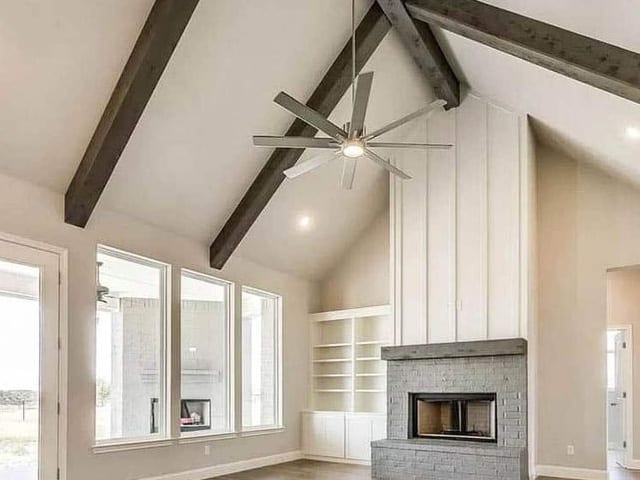Heating vents are meant to spread the heat around the room they are installed in. Either that heat comes from the floor or ceiling.
Thus, no one wonders that the location of installing heating vents means a lot and affects the working of the system too.
The cooling vent, when installed in the ceiling, works at the total and best capacity, while the heating vent is recommended to be installed on the floor for good results. Heat spreads more accurately from the bottom when compared to the wall or ceiling.

Usually, when guests see a heating vent placed on the ceiling rather than anywhere else in the living area, they ask the host, Why are heating vents on the ceiling? The best answer to this is they are effectively covering an idle space.
If cooling vents are placed on the floor, moving objects or walking on the floor becomes difficult. In contrast, walls also get occupied with the heating vent rather than unique and beautiful paintings or pictures.
Why Are Heating Vents On The Ceiling
Why are heating vents on the ceiling? This bothers a lot of people who state the fact that heating spreads best when a heating vent is installed on the floor rather than on the roof.
Several reasons led to the installation of the heating vent on the ceiling, and that includes; the easy process of building on the top; the shelter has the idlest space, which could be used productively if the heating vent was placed on it.
Additionally, it is cheap to install a heating vent on the ceiling, with a view that less finishing is required on the roof.
And last but not least, a multi-purpose heating vent that operates as a cooling vent is best placed on the ceiling as cooling spreads from the ceiling comparatively more quickly.
Pros Of Placing Heating Vent On The Ceiling
Easy To Install
Heating Vents are comparatively easy to install on the ceiling rather than anywhere else. Mostly, ceiling space remains idle, so this is also the best way to utilise that space for installing a heating vent. However, ceiling space is of no other use, like walls and floors, so it’s better to use that space for good and valuable purposes.
Good For Cool Air
Heating vents with the option of cooling are best placed on the ceiling rather than the wall or floor. Cooling spreads way quicker from upside down than any other location, so it’s always preferable to have a cooling system in the ceiling for short and long hours of cooling.
Idle Space Used Properly
The best thing to utilise the idle space of the ceiling is not any decoration or interior but a heating vent.
As the heating vent takes up a lot of space on the floor and can cause a barrier or hurdle while walking on the floor, it’s preferable to use the ceiling space and fix the heating vent over there.
Cost Effective
Placing a heating vent on the ceiling is cost-effective, too, as no clearance cost occurs, or the wall does not need to get settled before installation and even after installation; heavy finishing is not required.

Cons Of Placing Heating Vent On The Ceiling
Floor Vent Is Good For Heating
As discussed earlier, for cooling, it is good to come from upside down as the room gets cold quickly and for longer hours.
While heating, the floor vent is recommended as heat spreads faster when coming from the floor rather than the ceiling.
Although the ceiling is not a bad option, wair starts accumulating in the ceiling rather than disseminating around the room. This makes heating vents on the ceiling ineffective.
Conclusion
A conclusion can be drawn on why are heating vents on the ceiling. The article above demonstrates the best possible pros and cons of placing a heating vent on the ceiling, which clarifies the reason behind this measure.
To be precise, heating vents are very easy and quick to install in the ceiling with less cost to be used, but they work more productively when placed on floor as compared to the placement on ceiling.




